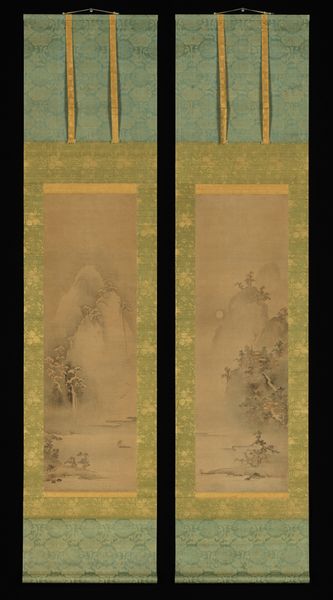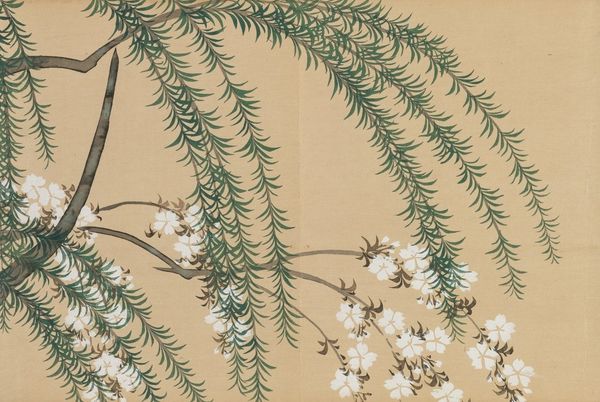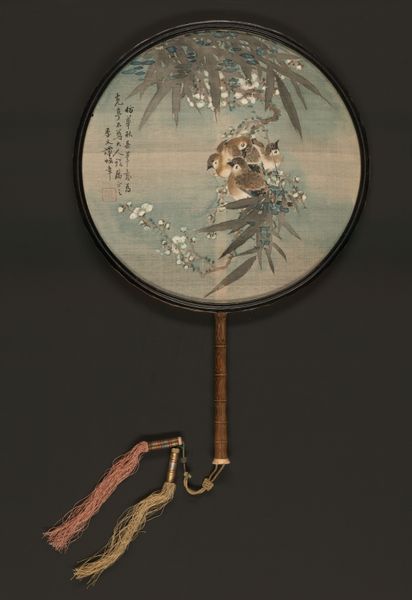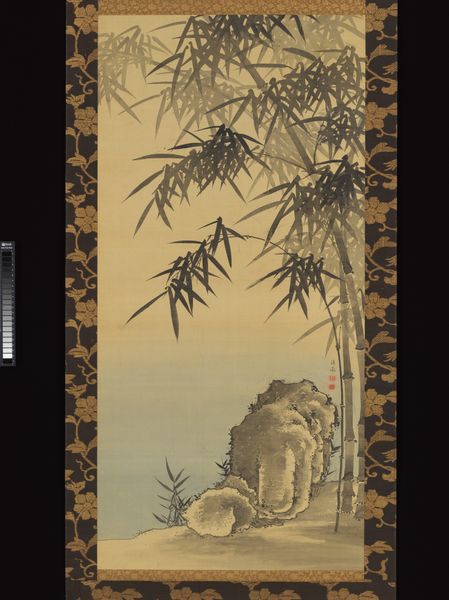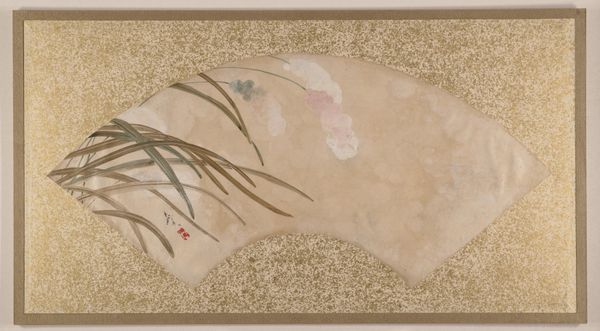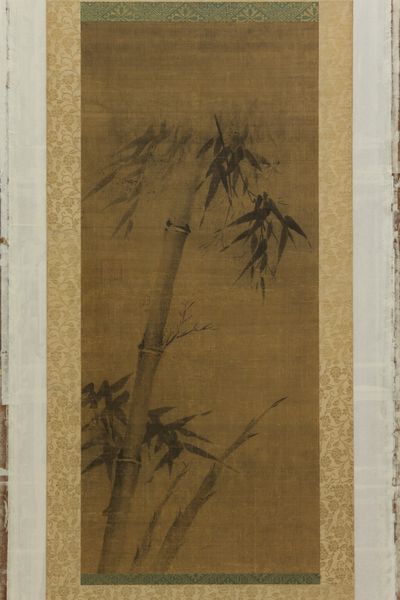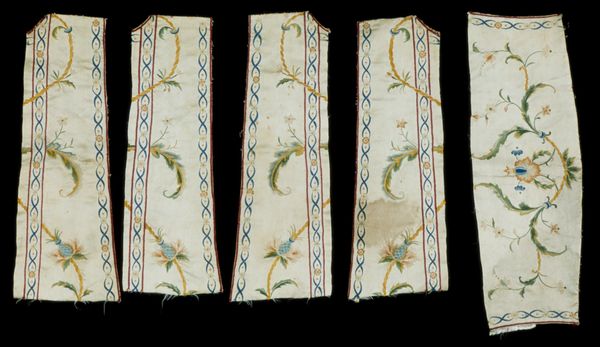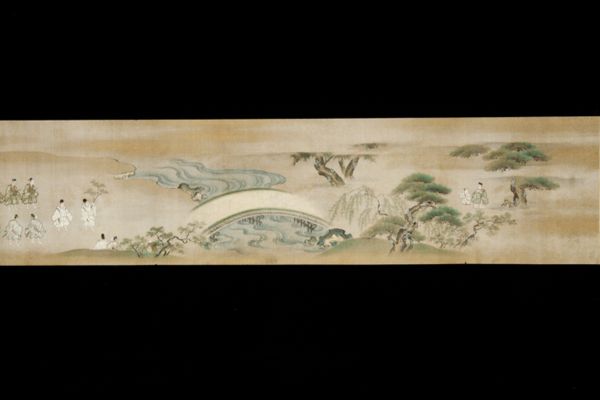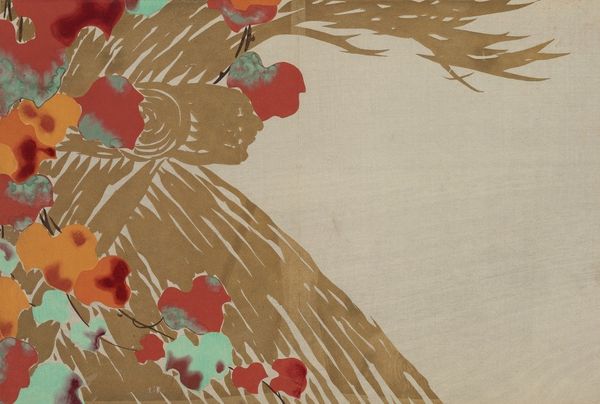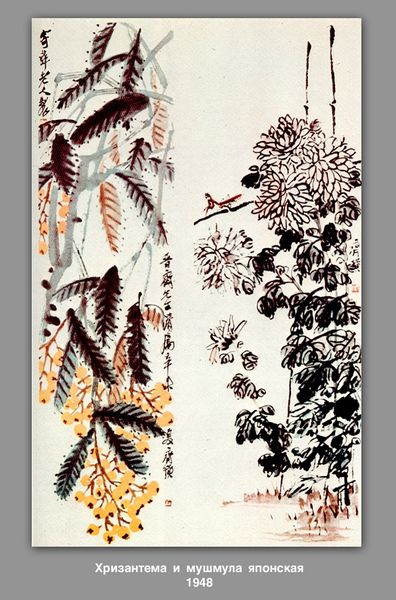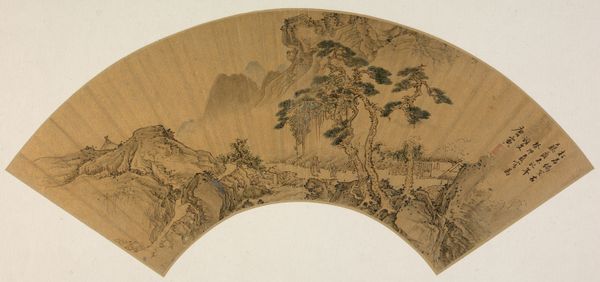
Saya Inrō with Bamboo Grove (exterior) and Rooster with Hen (interior) 1750 - 1799
0:00
0:00
ceramic
#
decorative element
#
asian-art
#
ceramic
#
japan
#
ceramic
#
decorative-art
#
decorative art
Dimensions: 2 7/16 x 2 15/16 x 15/16 in. (6.2 x 7.5 x 2.4 cm)
Copyright: Public Domain
Editor: This object is a Saya Inrō from between 1750 and 1799, made in Japan by Koma Sadahide. It's crafted from ceramic and features a bamboo grove on the exterior and a rooster with a hen on the interior. I’m immediately struck by how something so small and functional can be so exquisitely decorated. What do you see in this piece? Curator: This Inrō transcends its function as a mere container, inviting us to consider its symbolic weight within the sociopolitical landscape of Edo-period Japan. Bamboo, often representing resilience and flexibility, contrasts the inner depiction of the rooster, a symbol of courage and virility, alongside the hen, embodying nurturing femininity. How might the commissioning and wearing of this object by a male patron reinforce existing power structures while also subtly acknowledging the complementary role of women in maintaining social harmony? Editor: That's a fascinating way to read the imagery. I hadn't thought about the rooster and hen in terms of gender roles. The contrast you point out makes it much more dynamic than if they stood alone as decorative elements. Curator: Exactly. And let's not forget that ceramics during this period held a crucial intersection between artistic expression, technological innovation, and commercial value. The detailed artistry required a convergence of skill, capital, and aesthetic understanding. Can we then read this Inrō not only as a personal adornment, but as a testament to the complex societal hierarchies it both reflected and benefited from? How does considering its value within these frameworks deepen our appreciation of it today? Editor: I guess it highlights the way even everyday objects carry a lot of encoded meaning reflecting the society that created them. Curator: Precisely! Recognizing this expands our perception. Hopefully it moves us towards recognizing those relationships in today's objects as well. Editor: That's a perspective shift that will stay with me. Thanks!
Comments
No comments
Be the first to comment and join the conversation on the ultimate creative platform.
